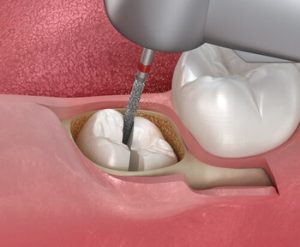An infected wisdom tooth can become more than just a mild annoyance—it can disrupt daily comfort and affect overall oral health. If you’ve noticed unusual sensations or discomfort near the back of your mouth, it may be worth paying closer attention. These molars don’t always grow as expected, and when they don’t, various issues can arise. Ignoring early signs might lead to more complex problems that require professional attention. Knowing when to act can make a considerable difference in preventing unnecessary discomfort and protecting long-term oral health.
What Causes an Infected Wisdom Tooth and How Can It Affect Your Oral Health?
A wisdom tooth that becomes infected can create unexpected challenges, affecting both comfort and overall dental well-being. Ignoring the issue may lead to worsening symptoms, making daily activities such as eating and speaking more difficult. Recognising the potential causes of an infected wisdom tooth and understanding how it impacts oral health can help in seeking the right treatment before complications arise.
How Does a Wisdom Tooth Infection Begin?
When wisdom teeth emerge, they do not always have enough space to grow properly. This can lead to impacted wisdom teeth, where they remain trapped under the gums or only partially break through. If a partially erupted wisdom tooth is difficult to clean, bacteria may build up around the gum line, leading to an infection. Food particles and plaque can become trapped in the area, creating the perfect environment for harmful bacteria to grow. Inflammation in the surrounding tissue can also make the gums tender, increasing the risk of further irritation.
Signs That a Wisdom Tooth Infection is Developing
One of the first indicators of a wisdom tooth infection is persistent discomfort near the affected area. Swollen gums and redness can follow, making it difficult to properly brush or floss around the affected tooth. Bad breath or a foul taste in the mouth may sometimes suggest an underlying infection.
If swelling spreads to the jaw or cheek, it may become increasingly difficult to open the mouth fully. A minor wisdom tooth infection may start with mild irritation, but if left untreated, symptoms can worsen.
How an Infected Wisdom Tooth Affects Other Teeth
An infected wisdom tooth does not only impact the surrounding gums; it can also affect other teeth nearby. As the wisdom tooth pushes against nearby teeth, it may create pressure that leads to misalignment or discomfort. The shifting of teeth can make it harder to sustain proper oral hygiene, increasing the risk of decay in surrounding areas. If infection spreads, it may affect more than just the wisdom tooth itself, potentially leading to more serious dental concerns. Wisdom teeth can cause complications beyond just pain, making timely attention essential.
The Risks of Leaving an Infection Untreated
Without proper intervention, an infection in a partially impacted wisdom tooth can spread beyond the affected area. If bacteria reach the deeper layers of tissue, an abscess may form, increasing the likelihood of more serious oral health complications. Upper wisdom teeth infections can sometimes lead to sinus issues, while infections in lower wisdom teeth may cause swelling that restricts jaw movement. Severe or recurrent infections can also weaken the immune response in the mouth, making future dental problems more likely. Addressing the issue early can help prevent unnecessary discomfort and long-term dental complications.
When Might Wisdom Teeth Removal Be Necessary?
If symptoms persist or an infection keeps returning, a professional evaluation is essential. In some cases, antibiotics may help control the infection temporarily, but they do not address the root cause. When four wisdom teeth are present, and one or more become problematic, a dentist may recommend removal to prevent future infections. Extraction may be the best option if pain, swelling, or repeated infections make everyday life uncomfortable. Consulting with a dental professional ensures the right approach for long-term oral health.
How Is the Wisdom Teeth Removal Procedure Performed?
Understanding how the procedure is performed can help individuals feel more confident about the process and what to expect during their appointment.
Preparing for the Procedure
Before the wisdom tooth removal begins, a detailed evaluation is carried out to determine the right approach. X-rays help assess the position of the wisdom teeth and whether they are impacted or growing at an angle. Based on the complexity of the case, the type of anaesthesia or sedation is selected to ensure a comfortable experience. Local anaesthesia is often used to numb the area, while general sedation may be recommended for more involved cases. Once the plan is in place, the next step is to proceed with the extraction process.
Accessing the Wisdom Teeth
The first step in removing the wisdom teeth involves making an opening in the gum tissue if necessary. When a tooth has fully emerged, it may be easier to loosen and extract. However, if the tooth is partially or fully covered by gum tissue or bone, careful incisions are made to provide access. In some cases, a small portion of bone may need to be adjusted to reach the tooth properly. The approach depends on the tooth’s position and whether it is deeply embedded within the jaw.
Loosening and Extracting the Teeth
Once the wisdom tooth is exposed, gentle movements are used to loosen it from the surrounding tissue. Rocking motions help detach the tooth from its socket, making removal smoother. If the tooth is particularly large or impacted, it may be divided into smaller sections before extraction. Breaking the tooth into pieces minimises disruption to the surrounding area and allows for a more controlled removal. The process is done carefully to ensure minimal pressure on the jaw and surrounding structures.
Ensuring the Area is Clean
After dentists remove wisdom teeth, the area is examined to ensure no fragments remain. Any debris or small particles are cleared to promote proper healing. The site is then cleaned to remove any remaining material and to lower the risk of infection. If necessary, stitches may be placed to close the gum tissue and support recovery. Some stitches dissolve naturally, while others may require removal at a follow-up visit.
 Final Steps Before Completing the Procedure
Final Steps Before Completing the Procedure
Once the wisdom teeth have been removed, the area is carefully examined to ensure there are no remaining fragments. The dentist checks for proper closure and ensures there is no unnecessary pressure on the surrounding tissues. Patients are monitored briefly to confirm stability before being discharged. Before leaving, essential post-procedure care instructions are provided to support smooth recovery. In some cases, a follow-up consultation may be recommended to assess healing and address any concerns.
Wisdom tooth extractions are a common dental procedure that can relieve discomfort and prevent future complications. By knowing what to expect, patients can approach the process with greater confidence and peace of mind.
What Should You Do After Wisdom Teeth Removal to Ensure Proper Healing?
After having a wisdom tooth removed, proper upkeep is crucial to ensure smooth healing and avoid complications. Taking the right steps during recovery supports comfort and helps the area heal as expected.
Managing Bleeding After the Procedure
Mild bleeding is common following the extraction, and controlling it is key to a smooth recovery. A gauze pad is usually placed over the site to help absorb excess fluid and promote clot formation. Applying gentle pressure by biting down on the gauze can slow bleeding and support the natural healing process. If necessary, replacing the gauze after a few hours ensures the area remains protected. However, excessive rinsing or touching the site too soon may disturb the clot, which could lead to complications. If bleeding continues longer than expected, checking with a dental professional is recommended.
Keeping the Area Clean Without Disrupting the Healing
Maintaining cleanliness after the procedure is important, but care must be taken not to interfere with the healing site. In the first day or two, rinsing with plain water or a mild salt solution can help remove debris without applying pressure to the area. Brushing should be done gently, avoiding direct contact with the extraction site to prevent irritation. Using a soft-bristled toothbrush is beneficial in keeping the surrounding teeth clean while reducing discomfort. Straws and forceful spitting should be avoided, as these actions may disturb the healing process. Taking these precautions allows the area to recover without unnecessary strain.
Managing Discomfort for a Smoother Recovery
Some discomfort is expected after the extraction, but there are ways to make the healing process more comfortable. Swelling may occur in the first few days, and using a cold compress on the outside of the face can help reduce puffiness. Resting and avoiding strenuous activities can prevent unnecessary strain, allowing the body to focus on recovery. If discomfort persists, taking pain-relief medication as directed by the dentist can provide relief. Following these steps ensures a smoother experience while the mouth adjusts to the changes.
Avoiding Activities That May Delay Healing
Certain habits should be modified during recovery to reduce the risk of complications. Smoking, for example, can interfere with healing and should be avoided during the recovery period. Excessive speaking or chewing on the side of the extraction site can also put pressure on the area and slow healing. Drinking plenty of water helps maintain hydration, but extremely hot or fizzy beverages may irritate the site. Avoiding actions that create suction, such as using a straw, reduces the risk of disturbing the healing tissue. Sticking to these precautions promotes a steady and uneventful recovery.
Knowing When to Seek Professional Advice
While mild discomfort is expected, certain symptoms may indicate the need for professional care. Severe or persistent pain, excessive swelling, or signs of infection should be addressed promptly. If the area does not seem to be healing as expected or unusual symptoms arise, scheduling a follow-up appointment ensures the situation is properly assessed. Being mindful of any changes helps prevent complications and ensures long-term oral health.
Taking the right precautions after wisdom tooth removal allows the healing process to go smoothly. By following professional recommendations and avoiding unnecessary strain, patients can recover comfortably while protecting their oral health.
What Are the Best Foods to Eat After Having Your Wisdom Teeth Removed?

To protect the extraction site, steer clear of hard, crunchy, or sticky foods. Choose soft foods such as oatmeal, cottage cheese, and scrambled eggs for a gentle protein boost. Soft fruits like bananas and avocado add variety while being easy to eat. Cold options, such as smoothies and ice cream, can help soothe the area while reducing swelling. Sticking to a gentle diet in the initial days can help support healing and make recovery more manageable. Transitioning back to a regular diet should be done gradually as comfort improves.
Act Before the Infection Worsens
An infected wisdom tooth can cause persistent discomfort, swelling, and even complications that impact overall oral health. Ignoring the symptoms may lead to worsening pain and further problems that require more extensive treatment. Seeking timely dental care helps address the infection before it spreads, reducing risks and restoring comfort. Whether you’re experiencing mild irritation or more severe symptoms, getting an expert evaluation is the first step to relief. Our team is ready to assess your condition and provide the necessary care to keep your smile healthy. Call us today at (02) 9159 6237 to schedule an appointment and take control of your oral health.
Note: Any surgical or invasive procedure carries risks. Before proceeding, you should seek a second opinion from an appropriately qualified health practitioner.
References
https://www.mayoclinic.org/diseases-conditions/wisdom-teeth/symptoms-causes/syc-20373808
https://www.betterhealth.vic.gov.au/health/conditionsandtreatments/wisdom-teeth


 Final Steps Before Completing the Procedure
Final Steps Before Completing the Procedure